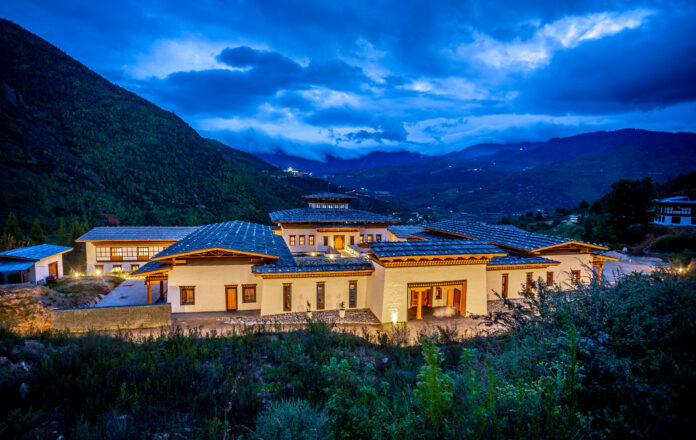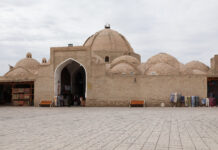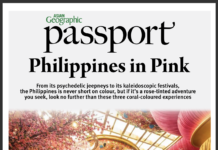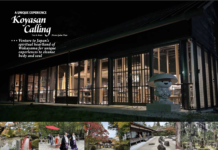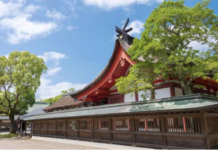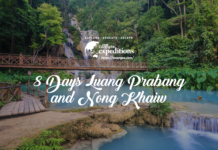Text and images by Subhasish Chakraborty
When it comes to Wellness Tourism, there definitely is a new kid in town – Bhutan. This tiny speck of paradise or even perhaps the world’s last Shangri-La is popularly referred to as the ‘Land of Thunder Dragon.’ It is a landlocked country and is nestled in the midst of the Eastern Himalayas, bordered by People’s Republic of China to the north and India to the south, east, and west. The landscape is conspicuous by the majestic Himalayan peaks and nourished by swift flowing rivers.
The country is so obsessed with “happiness” that right now Bhutan has emerged as a pioneer in the domain of wellness, sustainability and environmentally-friendly practices, all of which the entire world – particularly the scientific world that has been groping for a solution to the Covid-19 pandemic – is currently very fixated on.
Out here in the Himalayas, prosperity is measured not in terms of concepts like GDP or Per Capita Income, but by the level of happiness of its citizens. Way back in 1971, the country outrightly rejected the GDP and put in place the concept of GNH (Gross National Happiness) where prosperity is measured by taking into consideration citizens’ spiritual, physical, social and environmental health.
It took a tiny Himalayan kingdom to come out with a stark warning that planet Earth is on the verge of an economic and environmental disaster. The UN adopted Bhutan’s call for a more holistic approach towards development in 2013, which found the support of 68 countries.
India’s cyclonic monk – Swami Vivekananda – had visualized at least a century back that Asia will lead the world not only in terms of economics but also in terms of culture and in the creation of a new civilization.
Drawing succor from Swami Vivekananda’s predictions, it isn’t surprising to spiritualists that the new civilization will be created by Asian countries. The economies of USA and Europe are on the decline. However, the Asian economies are rapidly expanding and growing, and many leading international organizations like the United Nations, the World Bank and the World Trade Organization are unanimous in their opinion that in the 21st century, Asia will continue to lead the global economy.
The Bhutanese approach lays emphasis on the fact that with the advent of modernity, a new human breed has emerged whose beliefs correspond very little to the heritage of their forefathers. As a consequence, religion and spirituality – the kingpins of that heritage has been marginalized, both intellectually and politically. Progress has turned into something of a nightmare.
According to Huston Smith, a leading figure in the study of comparative religions, “it is discouraging to discover that not only are we no wiser than our forefathers were; we may be less wise for having neglected value questions while bringing nature to heel”. Also, it is a fact that the three hundred year old tension between science and religion shows no sign of easing; for science continues to be what modernity believes in. Science still can’t deal with values and existential meanings.
Another aspect that humanity faces in the present times is religious disharmony. Though the truth of religious harmony has been affirmed and proclaimed by the enlightened few in every generation, humanity as a whole has not yet come to terms with it. In today’s world, religious differences still rankle and continue to produce disharmony, misunderstanding and mutual distrust. Questions arise: How do we deal with all these differences? Would these vanish in course of time or are they here to stay? Are they in any way reconcileable? Is it possible to discover some thread of harmony connecting them? What is the significance of the presence of so many religious traditions in the history of the world? Such are the questions that every serious student of religion and spirituality have to reckon with.
The tourism industry has now grown into a global phenomenon, which has enough power to change the world and I for one believe that the Himalayan kingdom of Bhutan is merely following on the hallowed footsteps of Vajrayana Buddhism. Bhutan has identified tourism to play the role of a catalyst. But again, it is not falling prey to an overdose of Tourism; that might bring disaster. Rather, tourism in Bhutan is restricted and they have figured out the “Carrying Capacity” and have designed their Tourism Vision based on the “Carrying Capacity”.
To herald the dawn of organized tourism activity and to compliment the spiritual ethos of Vajrayana Buddhism, Bhutan’s first and only 5-star time-honoured spa resort – Bhutan Spirit Sanctuary, has been championing the campaign of Sustainable & Value Based Tourism at the altar of world tourism with a degree of proficiency which has compelled today’s discerning world traveler to not just have a look, but to come and experience the spiritual bliss firsthand!
Located in the midst of a rather panoramic valley (Paro Valley), Bhutan Spirit Sanctuary, offers the very best of Bhutan’s ancient “Wellness” recipes – traditional Bhutanese medicine, restorative spa treatments, authentic Bhutanese cuisine, outdoor escapades and holistic experiences. The resort draws inspiration from the wisdom of His Holiness Gyalwa Dokhampa’s philosophy of “The Restful Mind”.


According to Jim Dobson, Senior Contributor, Forbes – https://www.forbes.com – “it is the promise of a sacred tourism experience that attracted me to make the long trek to the Land of the Thunder Dragon. An experience that Dutch hotelier Louk Lennaerts has created with the brand new and remarkable Bhutan Spirit Sanctuary. The Sanctuary takes a different approach, encouraging guests to stay put with the goal of creating a lasting positive change. He believes wellbeing tourism makes guests happier inside and outside as well as educating them in their daily lives. After all, Bhutan is not a vacation destination but rather a spiritual and emotional journey becoming more of a pilgrimage than a typical escape.”
The ‘Wow’ factor begins right from the entry point of the Sanctuary – as honoured guests of the Sanctuary, you first come across the huge red gate that leads you to a archetypal Bhutanese courtyard. You then encounter a small bridge that leads you to another Bhutanese-style red gate from where you cross over to the threshold of the “Transformation room” . You are now face to face with the “Golden Door”. As this door opens up, inviting you inside the fairytale sanctuary – the magnificent Paro Valley unwraps her legendary beauty for you to fathom.
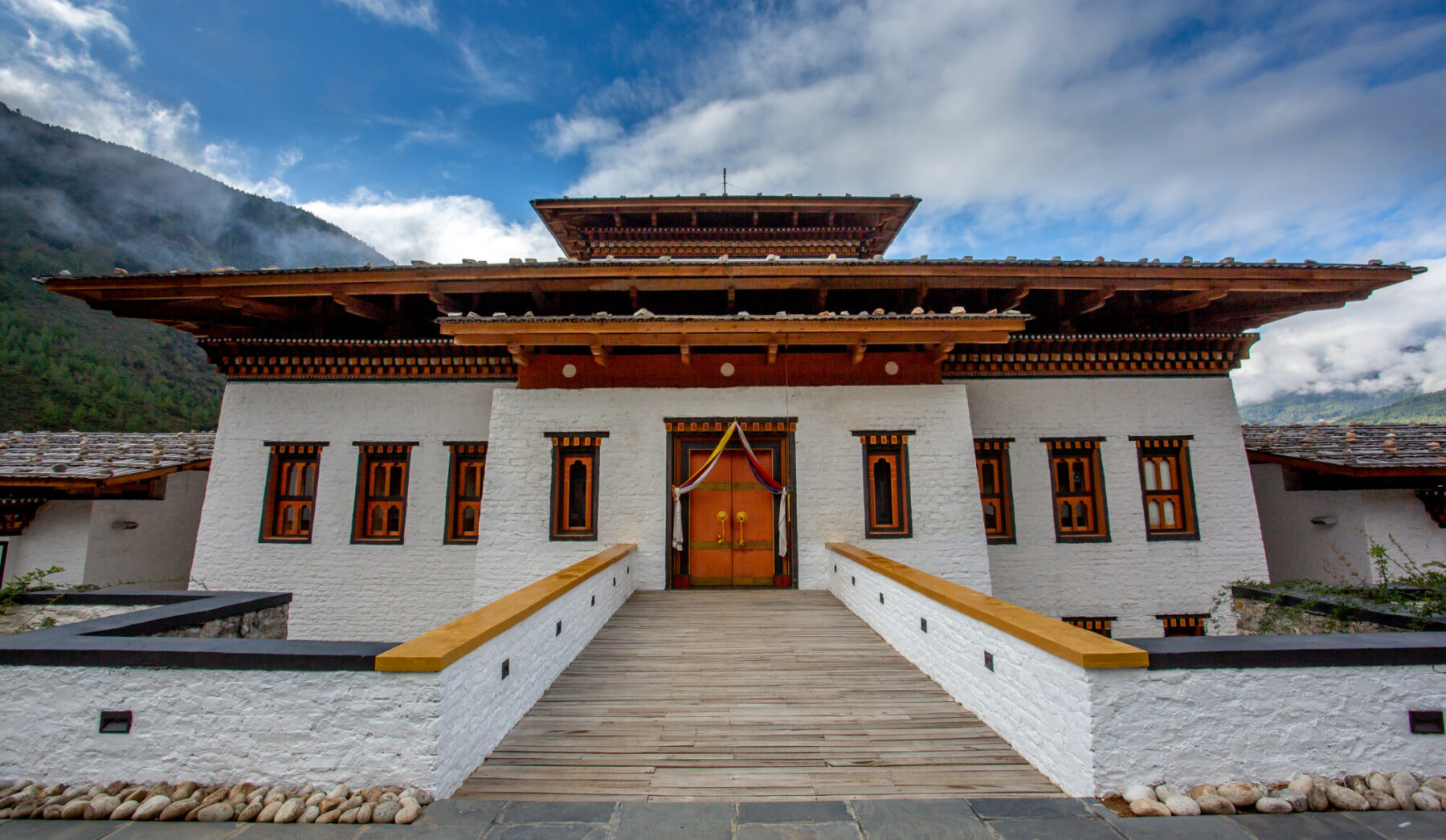
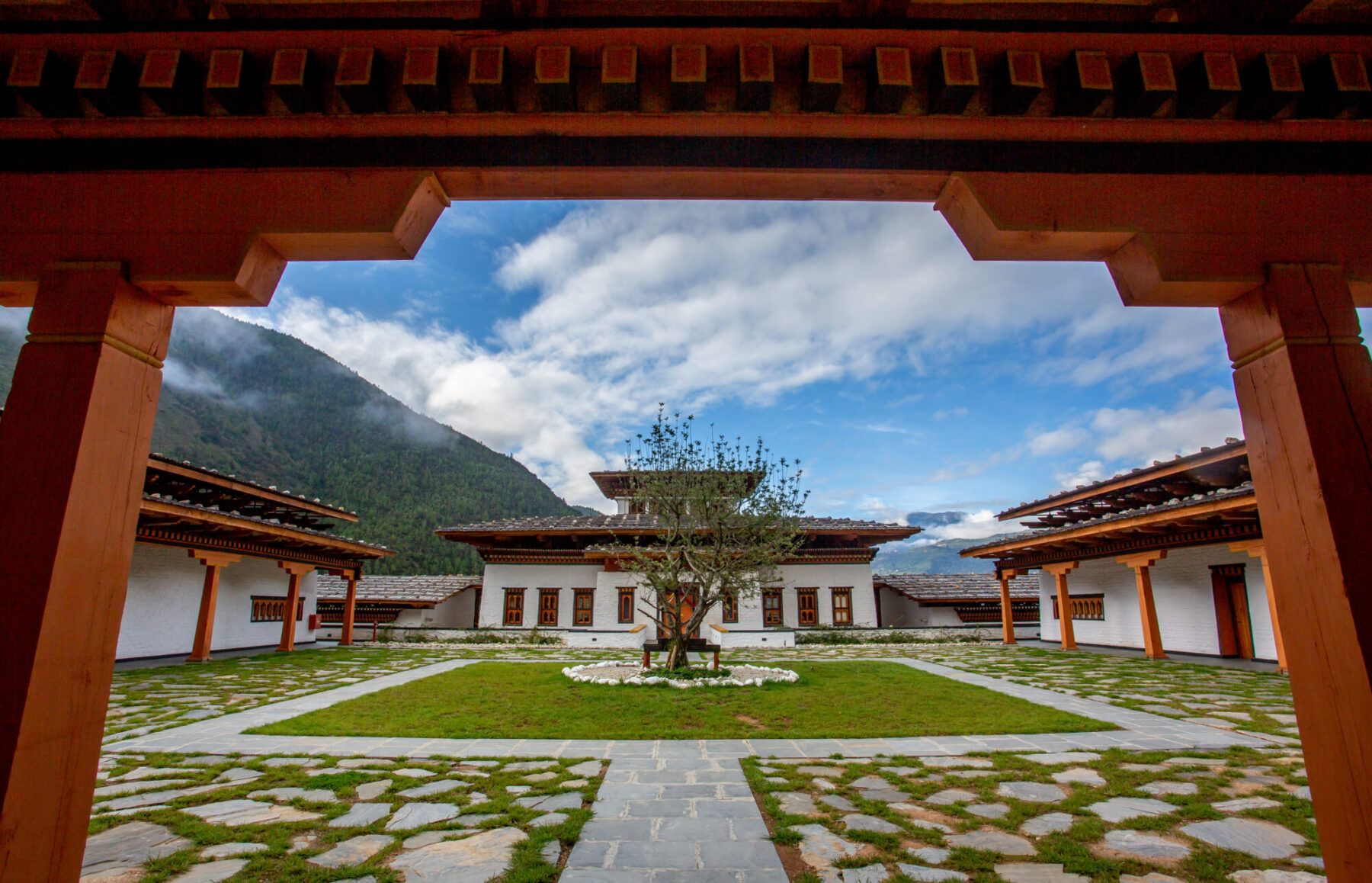
The Sanctuary is the brainchild of Dutch hotelier Louk Lennaert and has been designed to emulate a traditional Bhutanese fortress. The affable hotelier Louk, followed the footsteps of a fortuneteller who had prophesised that in the year 2018, Louk will live in Bhutan.
Louk’s miraculous turnaround, post- meeting the fortuneteller is best fathomed through his moving account, in which he states, “A few months later, he and I traveled to Bhutan with the plan to explore Bhutan and make up our minds whether building a new 5-star resort in Bhutan could become a reality or would just have to remain an unfulfilled dream. I have always worked hard, which gave me joy but also stress. After this first visit to Bhutan, for the first time I really experienced what a restful mind feels like. Only then did I realize that I needed to change my own life, but I did not know yet how. A few months after Thomas had planted the seed of Bhutan in my head, I met a Bhutanese Rinpoche who gave me a copy of his book called ‘The Restful Mind’. It turned out, that I could integrate my own inner journey with the project in Bhutan. Karma”.
The Sanctuary’s commitment for local community welfare is paramount, and often the overriding issue as it can be gauged without any hesitation viz-a-viz their membership with “Pack for a Purpose” – a Non Profit Organization that offers visitors with a chance to contribute in kind towards the local community. It goes without saying that when you put aside some space in your baggage and earmark that space for carrying essential provisions for school children or even medicines that aren’t easily available in Paro Valley/Bhutan, you are indeed making a huge impact in the lives of the local community.
Let me inform you that as a nonprofit organization “Pack for a Purpose” was formed for the sole purpose of informing visitors to the site of the possible option of packing items to donate to a needy organization at a travel destination, and listing organizations that it believes in good faith to need such items and to be worthwhile recipients. I can cite the example of British business tycoon Sir Richard Branson’s Necker Island – (www.virginlimitededition.com/en/necker-island), the secluded celeb paradise in the Caribbean amongst those who have collaborated with “Pack for a Purpose”.
Unlike other high-end hospitality properties that takes pride in offering guests the opportunity to savour the Great Bhutanese Outdoors – mountain biking, trekking, hot air ballooning, visits to national parks etc., Bhutan Spirit Sanctuary insists upon guests to remain inside the resort and delve into their innermost beings whilst embracing the Buddhist philosophy of “The Restful Mind”. Ideally a five nights’ stay is adequate enough for guests to be acquainted with Bhutanese culture and traditions.
The Sanctuary takes pride for its bewildering array of Traditional Bhutanese Medical Therapies, and a walk along the sanctuary’s herbal plantation zone is an absolute must. The in-house Doctor will prescribe the medicines as well as a holistic regimen based on the individual’s physical as well as spiritual needs. The sanctuary’s standout treatments are herbal compression, hot oil compression, moxibustion, herbal Jacuzzi, herb-infused hot stone bath and Ku Nye massages that are in great demand.
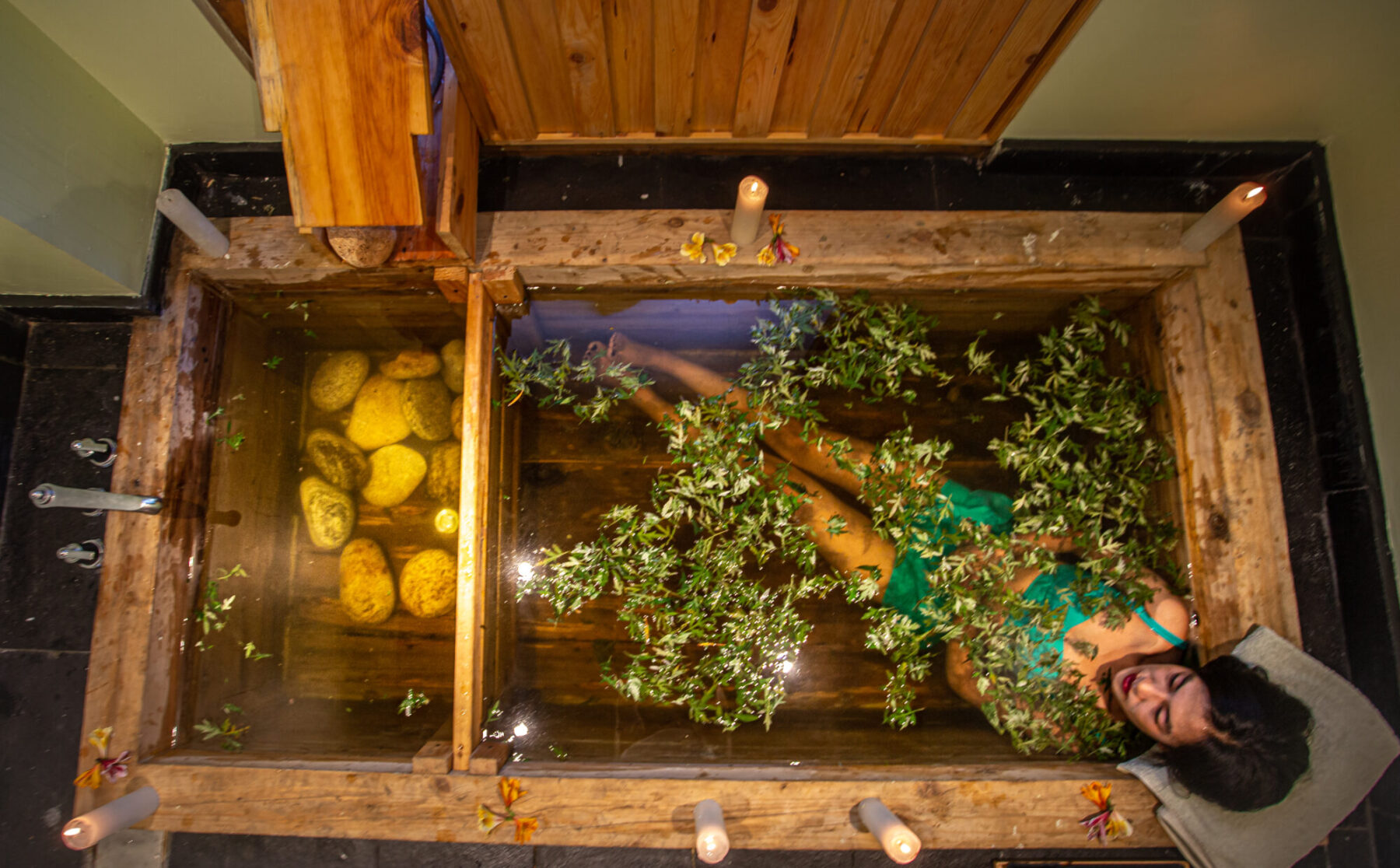
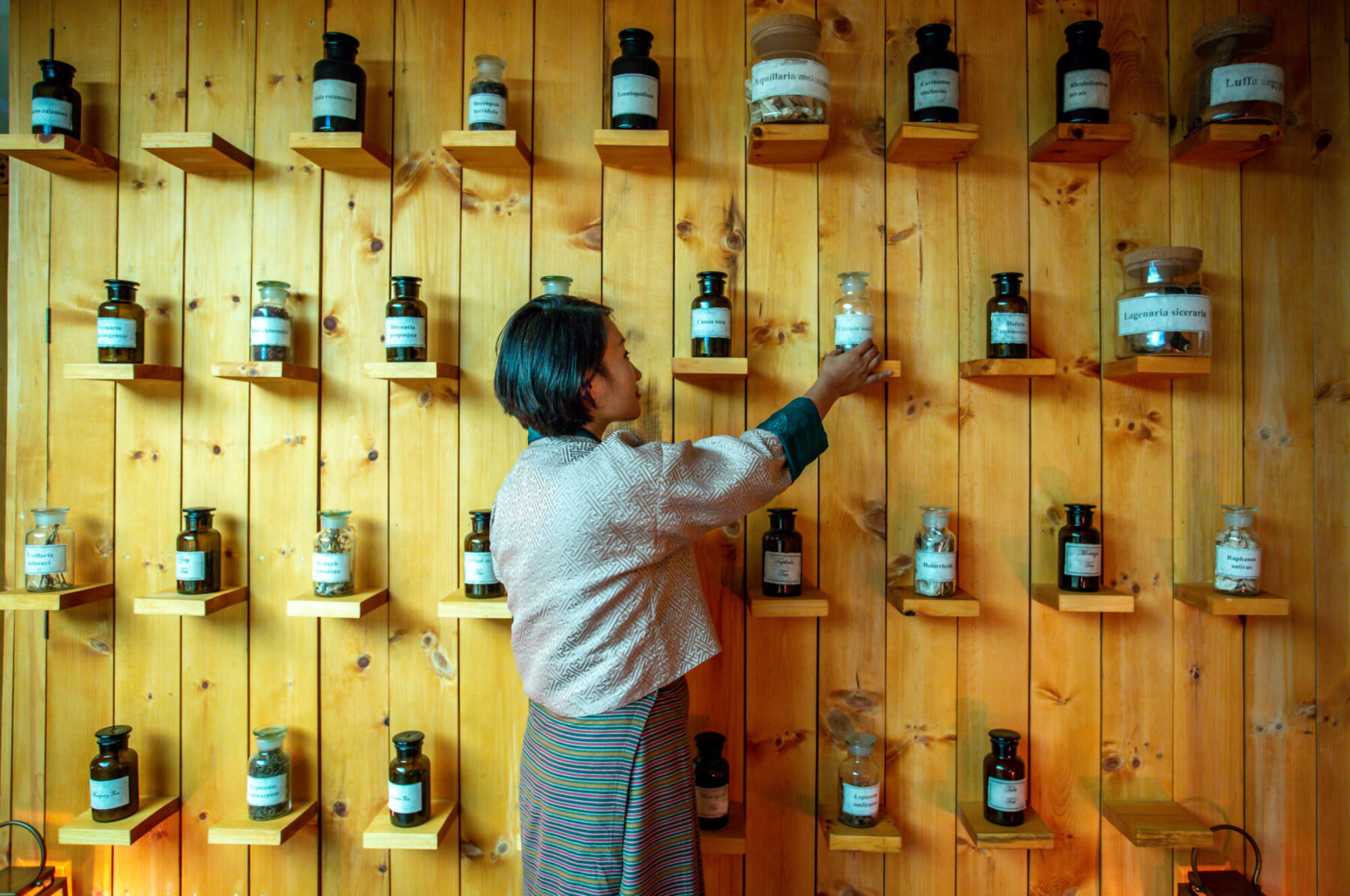
I can’t stop myself from reiterating those inspiring spiritual insights of Louk Lennaert – the Dutch hotelier who has revolutionized the concept of Wellness Tourism thus – “The Restful Mind philosophy, based on the teachings of His Eminence Gyalwa Dokhampa, is infused in the daily life at the Sanctuary. We think and act consciously, in our daily work and interactions, with each other and our guests. We realize we all are part of, and responsible for, the well-being of all that and those which surrounds us”.
Traveler’s Fact File:
Reaching There:
Bhutan’s only international airport is located in Paro and Bhutan Spirit Sanctuary is a spectacular 20 minutes drive from the airport. Druk Air, the national carrier of Bhutan operates routine flights to and fro Delhi, Kolkata, Dhaka, Kathmandu, Bodhgaya, Bagdogra, Guwahati, Bangkok and Singapore.
For further information and reservations, please feel free to get in touch with:
Bhutan Spirit Sanctuary – Neyphu Valley, Saba, Paro 12001, Bhutan
We are always available for questions:
sales@bhutanspiritsanctuary.com
+975 8 272 224
Website – https://bhutanspiritsanctuary.com
_________________________________________________________________________
About Subhasish Chakraborty
 Subhasish Chakraborty has been working as a travel journalist for the past two decades and has been editorially involved with numerous international in-flight magazines of renowned airlines like Cathay Pacific, Dragon Air, Bhutan Airlines, Air Asia, Airport Authority of India and many more. He was also involved with the UNWTO (World Tourism Organization) as a consultant.
Subhasish Chakraborty has been working as a travel journalist for the past two decades and has been editorially involved with numerous international in-flight magazines of renowned airlines like Cathay Pacific, Dragon Air, Bhutan Airlines, Air Asia, Airport Authority of India and many more. He was also involved with the UNWTO (World Tourism Organization) as a consultant.
For more captivating stories like this one, subscribe to Asian Geographic Magazine here.


